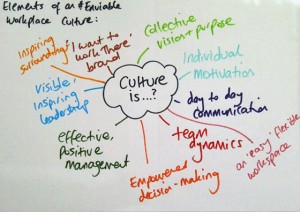How to achieve sustainable sales growth – Tips for effective customer retention
Part 2 of the series of tutorials on 'How to achieve sustainable sales growth' is here! This tutorial covers Customer Retention and will give you some useful tips and tricks for retaining your existing customers.
One of the eternal challenges that all businesses are faced with on a daily basis throughout the Process Industry is that of achieving sales turnover and sales margin targets. This article explains how customer retention is key to achieving sustainable sales in the long-term.
One of the most fundamental and essential components in any successful sales strategy is to ensure that we take care of our existing customers. In financial terms, it is often considerably less expensive to retain or to grow business with existing customers than to find new customers. Some figures within the industry suggest that it can be 5 or 6 times more expensive to find new customers but this really depends on the nature of the product or service and/or industry sector.
When it comes to retaining your existing customers there are essentially two key ingredients for ensuring the retention of customer loyalty and for guaranteeing repeat business and incremental growth:
1. Firstly, it is important that you continue to exceed your customer’s expectations.
2. Secondly, it is also important that you continually improve your customer services.
The Key to Customer Satisfaction
There is often no more powerful way to win repeat customers than to continue to exceed their expectations. We need to be continually striving to better understand our client’s businesses, their business objectives and what they require and need from us. We also need to be continually looking for better ways of delivering our service.
If a customer has a positive buying experience, they are likely to return. On the other hand if they have a negative experience, they almost certainly will not come back. Our daily challenge must therefore be to improve the probability that they will come back to us.
However, there will always be some customers who, whilst not particularly dissatisfied, may not be greatly motivated to come back to us. The challenge then becomes one of getting beyond just making them satisfied and to try to ensure they are motivated to come back to us.
So - how can we ensure that we do this?
The crucial role of Customer Expectations
Customers entering into a transaction will often take with them an expectation about how the transaction should be and how it should feel for them. Their expectations are often derived from their past experiences and are often nothing more than mental perceptions.
The customer’s perception of satisfaction often goes beyond the quality of the core product or service and very often is shaped by the entire buying experience. The transaction will almost always result in customers comparing their expectations with the service they have just received.
In any relationship, whether it is in business or in social life, people will constantly assess the fairness or relative equity of their involvement, compared to other relationships. It is a psychological fact that people will regularly assess and compare what they are giving to a relationship, with what they are getting out of it. They are ultimately expecting a balance in that relationship.
If a customer is getting less than he expects, he may withdraw from that relationship, he may demand a refund, or he may even pass on his negativity to others. If however, the customer feels that he has received more than he expected from the transaction, he will experience the psychological need to restore balance; in other words, he will want to repay you in some way.
Organisational culture
Every organisation projects a personality to its customers and depending on the prevailing culture, this company personality can result in a positive or a negative customer experience. If customers find the personality pleasing and helpful, they are more likely to return. If the company culture seems aloof, uncaring, or even hostile, the customer will be unlikely to return.
This company personality is often subliminally projected in a number of different ways. It is communicated by attitude, by verbal and non-verbal communication with employees, our customer response times, our employee behaviour etc.
Click here for a number of suggestions on how to project the right company personality.
Pareto Principle
You will find that the Pareto principal applies to your customer base whereby 80% of your business will probably come from 20% of your customers.
Get to know that crucial 20% of customers. Understand their business, understand their strategic direction, their projected annual spend on your type of product or service and their spending profiles. Get to know the key decision makers and understand how they will decide which company to work with and what you need to do to make your company their supplier of choice.
Key Account Plans
It is always good practice to put an account plan in place for each existing customer as part of a business Key account strategy. This creates a focus for gathering information about each customer organisation and should facilitate the capture and recording of all the key elements into a single document. This document can then be used as a review document to help the business to understand where it may be up to in its understanding of each and every customer.
Does your sales manager employ an effective customer retention strategy? Or do you suffer from a high customer attrition rate?
For more information on achieving effective customer retention please contact us at [email protected]. Please leave and feedback or comments below!
Get the latest process industry news
Interested in receiving even more industry-leading news from Process Industry Forum delivered directly to your inbox? Then sign up to our free newsletter. Bringing you the latest news, trends, innovations and opinion from across the process industry, our exclusive newsletter gives you all the industry insights of the moment in one, easy-to-digest bulletin. Stay ahead of the competition with regular process industry news instalments from PIF.




